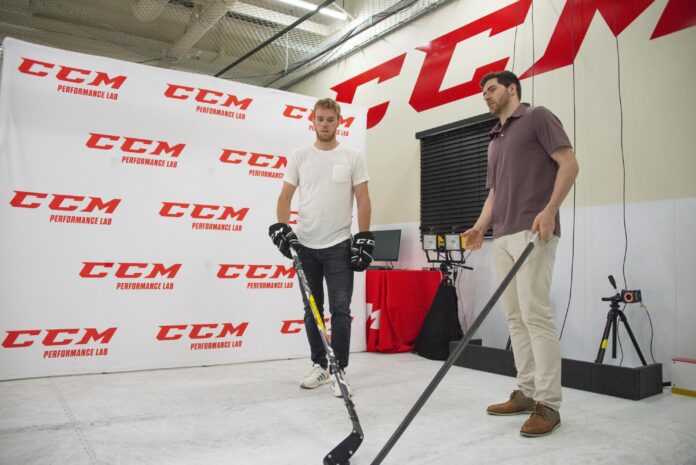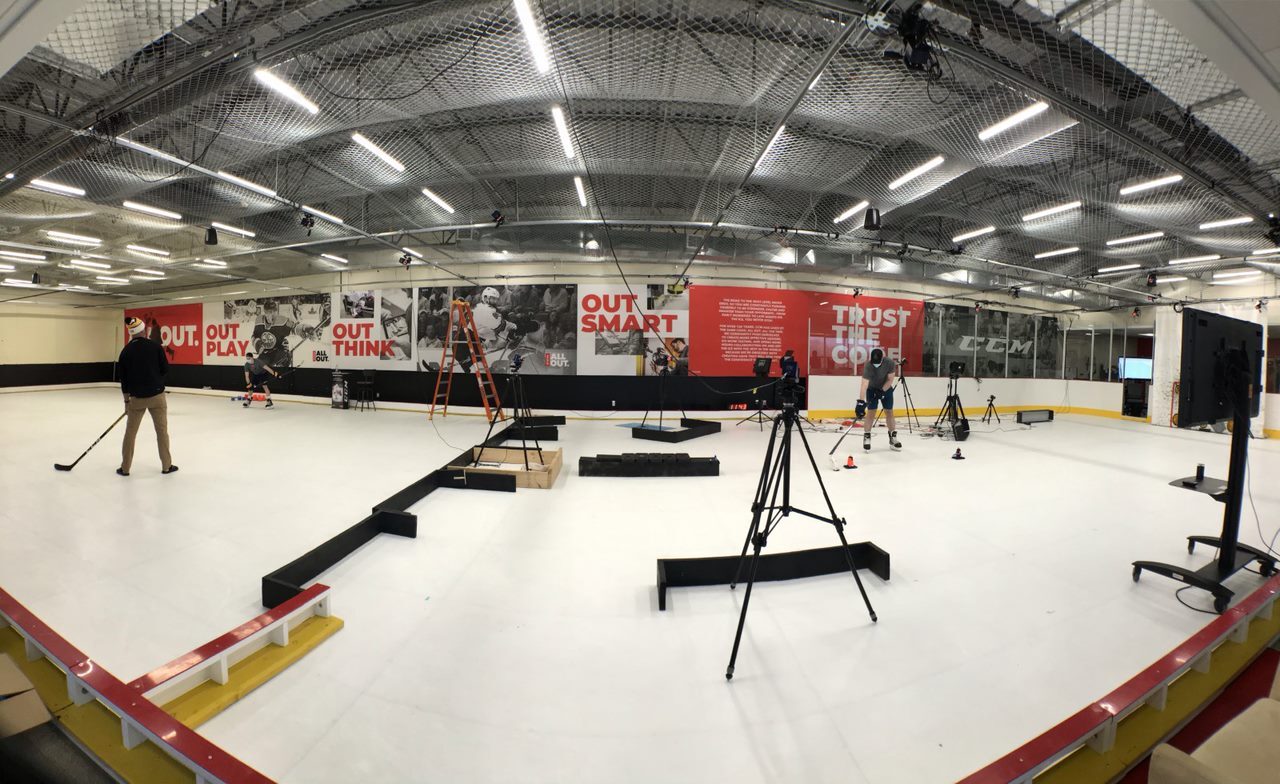

What can you do with a kinesiology degree? If you put that exact question into Google, the following options will come up first: dietitian, physical therapist, exercise physiologist, chiropractor, personal trainer.
All noble professions, but you’ll have to do a deeper dive to find the McGill Ice Hockey Research group, a program that studies the ergonomic and mechanical function of hockey gear, including skates, sticks and protective gear.
But for some, that in-depth Google search wasn’t necessary. It was just a natural progression. Aiden Hallihan completed his undergraduate degree at the University of New Brunswick before doing a master’s thesis on the ice hockey biomechanics of male and female hockey players at McGill University.
Now, he works with CCM hockey as the CCM Performance Lab Manager, where he manages scheduling, budgeting, helping identify areas of improvement and supporting all research taking place in the lab.
Beginning in 2018 fresh out of his master’s program, Hallihan has had four positions in his six years with the company.
“I’ve moved up fairly quickly, but I have to attribute a lot of that as well to the peers that I’ve been around and the guidance that they’ve provided,” he said.
For his first couple of years at the lab, Hallihan worked as a performance lab technician, before moving on to junior biomechanics developer, research developer and now manager. Growing into a role that requires more public speaking and leadership, he has some of his predecessors to thank.
“I was fortunate enough to have really good leader above me when I came in,” he said. “His name was Marc LeVangie.”
LeVangie followed a similar path to Hallihan, getting his first degree at St. Francis Xavier University, studying in the same masters program at McGill, then working with the University of Calgary before making the switch to CCM.
He was a biomechanics researcher with CCM when Hallihan first started, and they worked together in the ‘stick business unit,’ researching hockey sticks. In 2019, they moved to ‘innovation,’ which led to testing for different business units such as skates and protective gear.
“It took us several years before that became really apparent on how it was benefiting the company,” said Hallihan. “A few years after, stick sales were really increasing throughout all of our key markets and you could see that the product had the science behind it.”
This led to expanding the lab space and growing and adding new technology, he added. Some studies in other units involve isolating specific products such as skates and putting them through fatigue or stiffness testing. For protective gear like helmets, studies could involve putting helmets on head forms and impacting them at various locations to see how durable they are.
“They’ll have hockey sticks or they’ll break the stick and look at the tolerances, at what point do they break,” he said.
Hallihan and his colleague’s research, though, has been less impact and more human focused.
Their research can include anyone from younger players to semi-pro, though the majority are from what they call the ‘local elite level’ and may come from local U SPORTS or Junior A teams. While professional players may not have been used many times for internal research, their experience with CCM is called a pro fitting.

“We will do a specific, unique test for them where we understand their in-game performance metrics, try to link that and develop a protocol in our lab and then they will go through a series of different shots,” said Hallihan.
Afterwards, they will analyze the data and present a report back to the player, he said.
“Explaining the key differences with their sticks and then recommend which product would be best for what they’re looking for to improve their hockey game.”
This is the “bread and butter” of CCM’s research, said Hallihan, with the first NHL player coming into the Performance Lab in 2016. That athlete was P.K. Subban.
His favourite part about his job? Moving from an early-stage, rough concept, to a product ready for market. Or, seeing a professional player take the scientific advice and go on to have a standout season.
“We’re trying to learn and apply principles for the first time and then we finally get our samples to test and we see what we thought would hold true, is holding true,” said Hallihan.
Moving forward, the lab needs to become more efficient by implementing methodologies and measurement techniques that can help ease the workload, he said. With so many advancements with technology in sport, they want to ensure they are making strategic investments in both technology and individuals.
The workplace is incredibly dynamic and collaborative, said Hallihan. Regardless of what projects may come up in the future, they’re ready for the challenge.
“It’s never monotonous,” he said. “There’s always new challenges that it brings, I always have to be putting my thinking cap on.”
